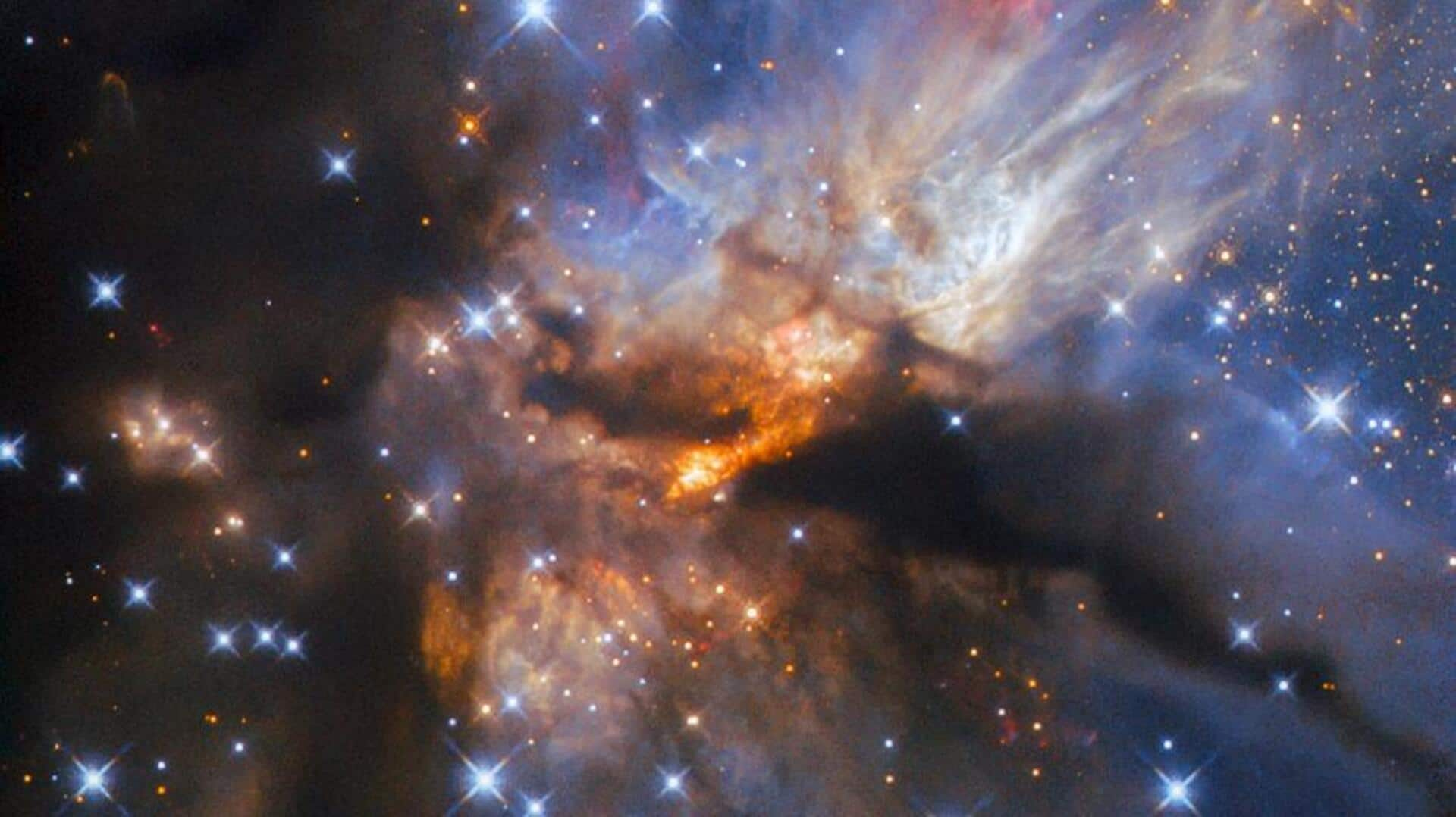
Hubble Telescope captures spectacular light show emerging from star formation
What's the story
The Hubble Space Telescope, a joint project between NASA and the European Space Agency (ESA), has snapped an incredible image of a region known for creating massive stars, termed G35.2-0.7N. Located about 7,200 light-years away in the Aquila constellation, this star-forming region is home to at least one B-type star, which is the second largest type of star. The image highlights a powerful jet of matter shooting out from the star, creating a dazzling light show.
Insights
Nebula: Giant cloud of dust and gas in space
The image displays stars in a nebula, which refers to a giant cloud of dust and gas, and a filament is seen running horizontally across the center. Swirling swathes of gas and dust in various colors emerge from around the center, with glowing orange areas filling the very center of the image. Several blue stars with cross-like spikes appear in the foreground, and tiny point-like stars are visible beyond the clouds.
Details
Understanding protostellar jets
Researchers used data from Hubble's Wide Field Camera 3 to examine ionization within the jets coming from the protostar, or the young star, buried in the G35.2-0.7N region. Ionization happens when atoms or molecules become charged, often after losing electrons in high-energy environments. Protostellar jets are huge beams of matter that shoot out from young stars in formation. These jets travel in parallel streams, allowing them to stretch far distances in relatively straight lines.
What Next?
Large amounts of dust render the fiery orange appearance
Hubble captured the breathtaking scene created by the ejected matter. Much of the nebula appears dark because dense dust clouds, which are producing the stars, block light from reaching Hubble. At the image's center lies the star, seen emitting a jet of material. A bright orange streak shows a cavity in the dust formed by the powerful jet as it streams toward Earth. The light from the protostar appears fiery orange due to the large amount of dust.